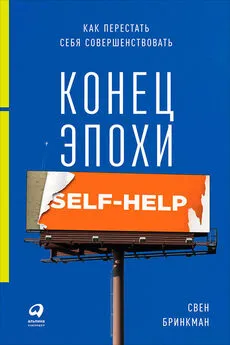Steve Andreas - Help with Negative Self–talk Volume I
- Название:Help with Negative Self–talk Volume I
- Автор:
- Жанр:
- Издательство:Real People Press
- Год:2009
- Город:Boulder
- ISBN:нет данных
- Рейтинг:
- Избранное:Добавить в избранное
-
Отзывы:
-
Ваша оценка:
Steve Andreas - Help with Negative Self–talk Volume I краткое содержание
Negative self-talk makes people feel bad. These bad feelings are the trigger for a huge variety of problems and difficulties, including...
Most eating disorders, Alcohol and other substance abuse and addictions, Anxiety and panic disorder, Anger and violence, Depression, Procrastination, Self-confidence & self-esteem issues
...the list goes on and on.
Often the people who suffer from these problems don’t realize that they are caused by inner critics, internalized parents, and other troublesome inner voices because they are so focused on the horrible feelings that result from them. Sometimes this negative self-talk is playing constantly in the background, like a song stuck on repeat!
It is very difficult to directly change an unpleasant emotion, but often quite easy to change an inner voice. When the voice changes, the feelings usually change with it, allowing for a more resourceful response to life's challenges.
By learning how you talk to yourself, you can easily learn new and more helpful ways to do so.
Help with Negative Self–talk Volume I - читать онлайн бесплатно полную версию (весь текст целиком)
Интервал:
Закладка:
is impossible to process it all, and that makes it very hard to notice what is happening around you, or to accomplish anything.
It is relatively easy to learn to focus on just one of those internal movies at a time, allowing the others to recede into the distance and become smaller, dimmer, black and white, and quieter. When there is only one movie to attend to in the foreground, you can more easily process that information, and then allow it to recede into the distance, so that a different movie can become foreground and be processed in turn.
Phobia/abuseSomeone who has a phobia — or any other trauma, abuse, PTSD flashback, etc. — remembers a terrible experience by being inside it, as if they were experiencing it all over again. As a result, they have all the awful feelings that they had in the original experience. Others who have had equally horrible experiences can recall them comfortably because they see them as an observer watching a movie on a movie screen, as if it were happening to someone else. Since they are outside the experience, they don't have any of the feelings of being inside it. Either they feel neutral, or they have the feelings that a compassionate observer might have. It is easy to teach someone with a phobia to take their memories of a terrible event and project them onto a movie screen, so that they can respond to them neutrally. (1,ch. 7)
GriefThe structure of grief is exactly the reverse of a phobia or trauma. In a phobia, someone remembers a horrible experience by being inside it, so they have all the awful feelings again. In grief, someone remembers a wonderful experience by being outside it, so they can't feel the treasured feelings that they previously had with the dead person, leaving them with only an empty feeling. Since the structure of grief is the reverse of a phobia, the resolution for grief is also the reverse — to remember being with the dead person by being inside their special memories of them, so that they can easily re–experience all the good feelings that they once had with them. (1,ch. 11)
Epistemology
3.The epistemologyof NLP is fundamentally the same as that of physics, and all of science. We discover what is true through experimentation and testing, and this is a process that may pause, but never stops, and is continually used to expand, revise, and enrich the field. Every pattern or method in NLP includes ways to test whether each step has been successful or not, using nonverbal response as the primary feedback, along with verbal report.
However, most of NLP has only been tested "clinically" in the experience of those who have made changes in their lives. This is also true of most psychology and medical practice. It has not yet been rigorously tested in controlled experiments, and the same is true for the majority of other therapeutic and even medical interventions.
NLP has been developed outside academia, where most research takes place, and those who are most active in the field have been busy developing the methodology, discovering new ways to help people make changes. The kind of rigorous research that would validate NLP takes a great deal of time, money, and subjects, and it simply has not yet been done. However, many of the patterns in NLP could be tested far more easily than other psychological approaches, because each step of each process specifies both the intervention to be made, and how to evaluate whether or not that step has been successful. In addition, most NLP patterns achieve outcomes dependably, often in a session or two, which would greatly shorten the process of testing and follow–up.
Even though NLP is in its infancy — only some 35 years old — it already includes a wide range of practical processes, as well as a consistent and coherent methodology that underlies the specific methods. These broader understandings provide a framework for developing new methods and evaluating them. This methodology can also be used to understand methods that have been developed by other people intuitively, or out of a different orientation, to discover how they work, and how to improve them.
I have been teaching NLP processes at national psychotherapy conferences for many years, and observing as many other presenters as I can, especially when they are willing to actually demonstrate what they do. In almost all cases, what I can do with NLP is vastly superior, and much faster and more thorough than other approaches. As the field continues to develop and differentiate, we are able to do much more every year.
About the Author
Steve Andreas was introduced to NLP in 1977, and was one of the first small group of people to be certified by the original co–developers, Richard Bandler and John Grinder as NLP practitioner, master practitioner, and trainer in 1979, along with his partner, Connirae. He and Connirae co–edited four of the early classic Bandler/Grinder books, Frogs into Princes, Trance–formations, Reframing, and Using Your Brain — for a CHANGE. Steve and Connirae together wrote Heart of the Mind, and Change Your Mind — and Keep the Change. Steve has also written Virginia Satir: the patterns of her magic, modeling how Satir used NLP principles in her work with families, and Transforming Your Self: becoming who you want to be, modeling the structure of self–concept and how to change it quickly and easily.
His most recent two–volume book, Six Blind Elephants: understanding ourselves and each other, again demonstrates that he continues to be one of the foremost thinkers advancing the development of the field. This book presents a "unified field theory" of NLP and personal change, based on the well–researched field of cognitive linguistics. This book shows how all the different methods of change work — whether described as NLP or not — can be understood as resulting from changing one or more of three fundamental process variables:
a) The scope of sensory–based experience that we attend to,
b) The way we categorize that scope of experience, and
c) The logical level of the categorization.
In addition to his books, Steve has published numerous articles on NLP–related topics in various publications including the Psychotherapy Networker, (formerly the Family Therapy Networker) and the Milton H. Erickson Foundation Newsletter.
He has also produced over 50 DVD and CD demonstrations of NLP patterns. He continues to model and write about new NLP patterns and understandings at his home in the foothills of the rocky mountains near Boulder, Colorado. Steve earned a BS in Chemistry from Caltech in 1957, and an MA in psychology from Brandeis University in 1961. He taught psychology and social science at a junior college in California from 1962–1970, and did Gestalt Therapy from 1967–1977. He edited Fritz Perls' Gestalt Therapy Verbatim and In and Out the Garbage Pail, and wrote Awareness: exploring, experimenting, experiencing — all under his previous name, John O. Stevens, which he changed in 1981 when he married Connirae Andreas, and took her last name.
Steve maintains a blog at: http://realpeoplepress.com/blog/and a web site at: http://www.steveandreas.com/
Many of Steve's NLP products can be found at Real People Press: http://www.realpeoplepress.com/
Many other NLP products can be found at NLP Comprehensive: http://www.nlpco.com/
References
1) Andreas, Connirae; and Andreas, Steve. Boulder, Colorado. Heart of the Mind. Real People Press. 1989
2) Andreas, Connirae; and Andreas, Tamara. Core Transformation. Boulder, Colorado. Real People Press. 1994
3) Andreas, Steve, and Andreas, Connirae. Change Your Mind—and Keep the Change. Boulder, Colorado. Real People Press. 1987
4) Andreas, Steve, and Andreas, Connirae. "Resolving Grief." http://www.steveandreas.com/Articles/grief02.html
5) Andreas, Steve. Six Blind Elephants: understanding ourselves and each other, volumes I & II. Boulder, Colorado. Real People Press. 2006
6) Andreas, Steve. "Core Questions" (CD) Milton Erickson Foundation conference, "Brief Therapy, Lasting Impressions." 2006 http://www.realpeoplepress.com/core –questionscd–p–68.html
7) Andreas, Steve. Transforming Your Self: becoming who you want to be. Boulder, Colorado. Real People Press. 2002
8) Andreas, Steve. Virginia Satir: the patterns of her magic. Boulder, Colorado. Real People Press. 1991
9) Austin, Andrew T. The Rainbow Machine: tales from a neurolinguisf s journal. Boulder, Colorado. Real People Press. 2007
10) Bandler, Richard, and Grinder, John. Patterns of the Hypnotic Techniques of Milton H. Erickson, MD, volume I Cupertino, CA. 1975
11) Beck, Aaron T. Cognitive Therapy of Depression. New York, Guilford Press, 1987
12) Burns, David D. Feeling Good: the new mood therapy. New York, Avon books, 1992
13) Derks, Lucas. Social Panoramas: changing the unconscious landscape with NLP and Psychotherapy. Williston, VT Crown House Publishing, 2005
14) Emotional Freedom Technique (EMT) http://www.emofree.com/
15) Ekman, Paul. Emotions Revealed: Understanding Faces and Feelings. London, Orion, Phoenix, 2004
16) Ellis, Albert. Overcoming Resistance: A Rational Emotive Behavior Therapy Integrated Approach. New York, Springer Publishing Company, 2007
17) Lakoff, George. Women, Fire, and Dangerous Things; what categories reveal about the mind. Chicago IL, University of Chicago Press, 1987
18) McWhirter, John. http://www.sensorysystems.co.uk/staffjohn.htm
19) Nardone, Giorgio; and Portelli, Claudette. Knowing Through Changing. Carmarthen, Wales Crown House Publishing, 2005
20) Walker, Lewis. Changing with NLP: a casebook of neuro–linguistic programming in medical practice. Oxford, UK. Radcliffe Medical Press, Ltd. 2004
21) Yapko, Michael. "Breaking Patterns of Depression" DVD transcript. Phoenix, AZ, Zeig Tucker and Theisen. http://zeigtucker.com/pdf/yapkosg.pdf
Примечания
1
This chapter is adapted from the appendix to Transforming Your Self: becoming who you want to be. (7)
2
This chapter is adapted from Six Blind Elephants (5, vol. 2, ch. 1, pp. 13–16).
Интервал:
Закладка:









